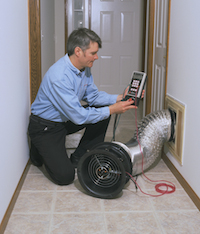-
HERS rater
Bleu Nova Inspections offer energy analysis for residential home and small commercial properties.- We are staffed with professional HERS Raters and a BPI (Building Performance Institute) Certified company. As a Energy Analyst Professional, we take a different approach to evaluating a structure. This assessment is a comprehensive inspection that addresses the health & comfort of the dwelling and in addition to energy usage.
A certified Home Energy Rater or Building Analyst- We assess the energy efficiency of a home, assigning it a relative performance score. The lower the number, the more energy efficient the home.
In this evaluation, we use state-of-the-art technology - Energy modeling platforms, Blower Door Fans and/or Duct Leakage/Pressure systems to incorporate diagnostic testing for performance and safety of the structure.
Bleu Nova Inspections can also document and certify compliance codes with Horry & Georgetown counties and all other local municipality building codes or other construction standards that are required for builders.
- Residential Energy Compliance Code Certificate
- Building Envelope Sealing Certificate
- Duct Sealing Certificate
The Duct Blaster test
The most common method for testing the tightness of a duct system is the duct-blower test (also known as the Duct Blaster test). A duct blower resembles a miniature blower door; the most common brand is the Duct Blaster, manufactured by the Energy Conservatory in Minneapolis.
Here are the steps:
- All supply registers and return grilles are sealed with polyethylene and tape.
- The air handler fan is turned off.
- The Duct Blaster is set up and attached to the duct system (near the furnace or at a large return-air grille).
- The manometer’s reference probe is inserted into the air handler plenum.
- The Duct Blaster is turned on to pressurize the duct system to 25 Pascals (a pressure which represents typical operating pressures for forced-air systems). The airflow through the Duct Blaster fan (which is displayed in cfm on the Duct Blaster’s manometer) equals the flow escaping through leaks in the duct system. The results are reported as “cfm @ 25 Pascals” or “cfm25.”
Builders hoping to comply with the 2009 IRC duct-testing requirements will need Duct Blaster test results showing total duct leakage equal to or less than either 6 or 12 cfm (depending on whether it is a rough-in test or a post-construction test) per 100 square feet of conditioned floor area.

Duct testing is coming to your job site — NOW!!!
For decades, plumbers have routinely tested newly installed supply and drain pipes. Meanwhile, most HVAC contractors have gotten away with leaky, untested duct systems. However, the tide is now turning. The future is here, testing residential duct systems for leaks is a routine part of residential construction.
